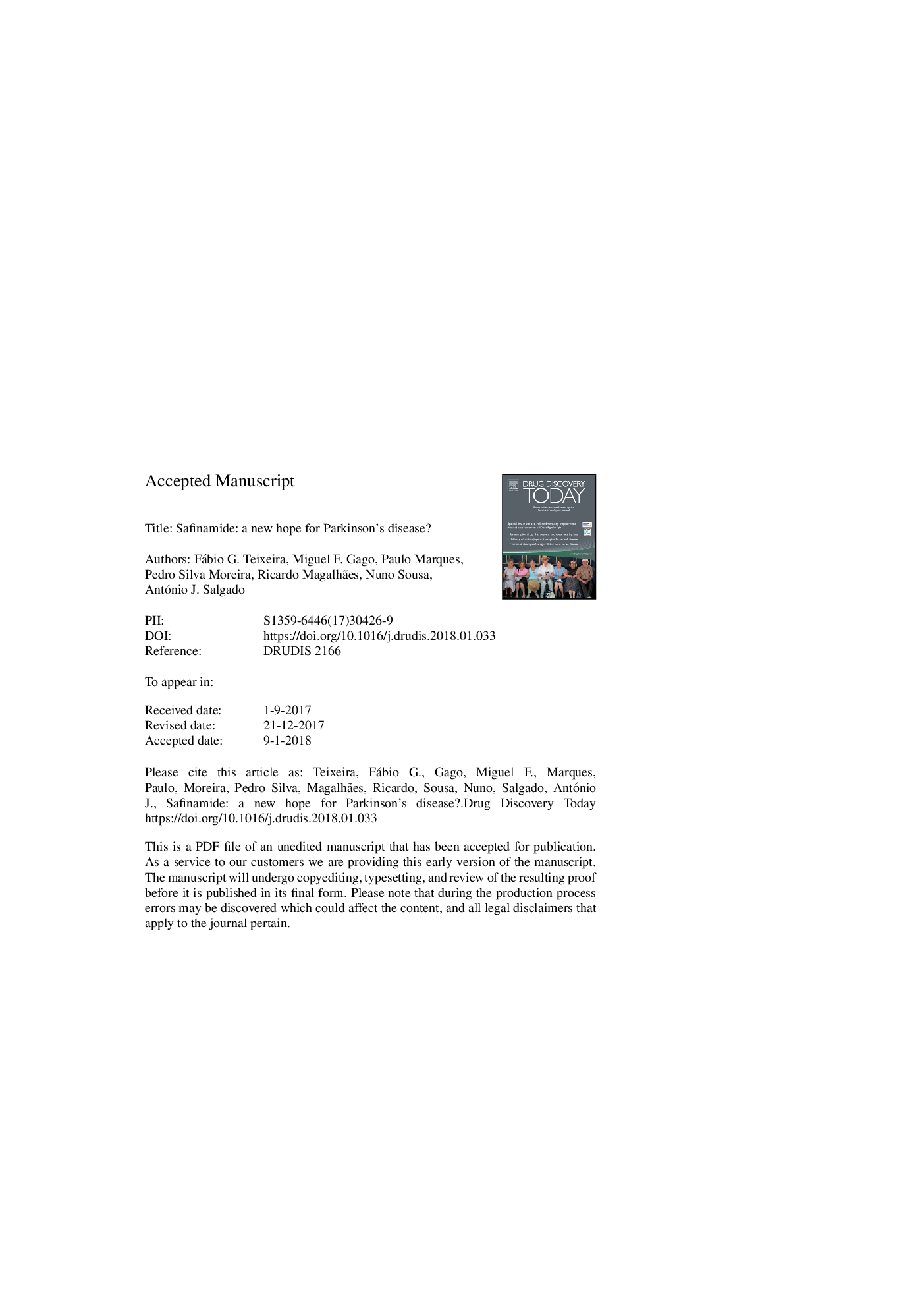| Article ID | Journal | Published Year | Pages | File Type |
|---|---|---|---|---|
| 8409983 | Drug Discovery Today | 2018 | 14 Pages |
Abstract
The loss of dopaminergic neurons (DAn) and reduced dopamine (DA) production underlies the reasoning behind the gold standard treatment for Parkinson's disease (PD) using levodopa (L-DOPA). Recently licensed by the European Medicine Agency (EMA) and US Food and Drug Administration (FDA), safinamide [a monoamine oxidase B (MOA-B) inhibitor] is an alternative to L-DOPA; as we discuss here, it enhances dopaminergic transmission with decreased secondary effects compared with L-DOPA. In addition, nondopaminergic actions (neuroprotective effects) have been reported, with safinamide inhibiting glutamate release and sodium/calcium channels, reducing the excitotoxic input to dopaminergic neuronal death. Effects of safinamide have been correlated with the amelioration of non-motor symptoms (NMS), although these remain under discussion. Overall, safinamide can be considered to have potential antidyskinetic and neuroprotective effects and future trials and/or studies should be performed to provide further evidence for its potential as an anti-PD drug.
Related Topics
Life Sciences
Biochemistry, Genetics and Molecular Biology
Biotechnology
Authors
Fábio G. Teixeira, Miguel F. Gago, Paulo Marques, Pedro Silva Moreira, Ricardo Magalhães, Nuno Sousa, António J. Salgado,
